5 ways NCC volunteers are contributing
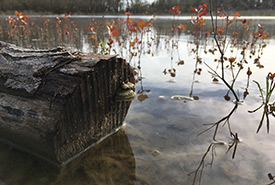
Restored wetland, Pelee Island, ON (Photo by NCC)
2021-2030 marks the UN Decade on Ecosystem Restoration, indicating the urgent need for humans to prevent and protect our Earth’s ecosystems from further degradation. As a new summer intern with the Nature Conservancy of Canada (NCC), I’ve been scrolling through the archives of past blog posts and photos. There are many examples of projects and events here that demonstrate how NCC has done its part to ensure that Canada’s diverse natural ecosystems are safeguarded from environmental threats. For decades, NCC and our Conservation Volunteers have been a driving force behind a wide range of conservation efforts, with each region facing its own unique set of opportunities and challenges. Despite putting a hold on volunteer events due to the pandemic, NCC is eager to continue these events once restrictions are lifted.
NCC’s Conservation Volunteers take a hands-on approach to caring for important places, including removing fencing that impedes wildlife movement, removing garbage and removing invasive species to provide an opportunity for native plants to thrive.
Here are five examples and ways that Conservation Volunteers have contributed to restoring habitats:
Cleaning polluted shorelines
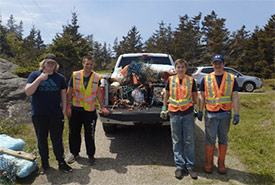
Conservation Volunteers at Boar’s Head, NS (Photo by NCC)
Atlantic Canada holds one of the world’s longest coastlines, stretching over 40,000 kilometres. This region has been impacted greatly by garbage pollution in the ocean, which threatens both wildlife and their habitat. In 2019, seven shoreline cleanup events were held across four Maritime provinces, including one at Boar’s Head, Nova Scotia, where four truckloads of garbage were removed.
Getting rid of invasive species
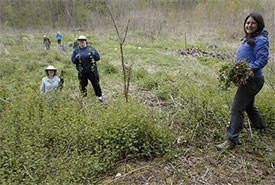
Conservation Volunteers pulling garlic mustard (Photo by NCC)
Garlic mustard is an invasive plant species that has become widespread in many parts of Ontario and is spreading across the province at a rapid rate. The plant interferes with the development of native plant species, releasing chemicals through its roots that make it difficult for native plant species and trees to grow in that area. NCC’s garlic-mustard-pulling Conservation Volunteers events are essential to stopping its growth, and over 100 volunteers showed up in 2019 across Ontario to help the cause.
Tree planting
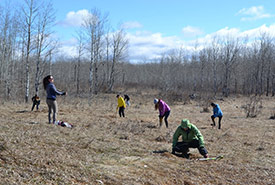
Conservation Volunteers planting trees at Meeting Lake, SK (Photo by Sandra Younie)
Tree planting gives volunteers a chance to get their hands dirty and leave a lasting, positive impact on the land. Tree planting volunteer events are held annually in Meeting Lake, Saskatchewan, with the goal of helping restore an ecosystem that had previously been damaged by logging. In 2019, volunteers planted a total of 450 trees in just one day, including white spruce, jack pine and white birch. Their efforts helped restore an environment and gave it a promising future.
Removing barriers to wildlife movement
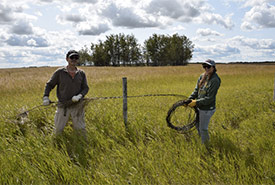
Conservation Volunteers removing fencing in Ferrier, AB (Photo by NCC)
In Alberta, volunteers gathered to help remove unwanted fencing that was no longer needed. Old fencing wire can injure wildlife and be a barrier to species movement, such as pronghorn. More than 3 kilometres of unwanted fencing was removed by NCC volunteers from the Ferrier property in 2019, lessening the risk of future animal entanglement.
Restoring a wetland
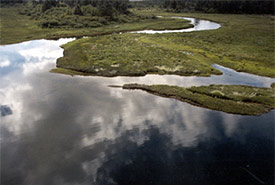
Campbell River Estuary, BC (Photo by NCC)
The Campbell River Estuary in BC was once the site of a large milling operation, which disrupted the area’s natural wetland ecosystem and wildlife. NCC and volunteers worked diligently to restore the property back to its natural form, removing concrete, debris and replanting vegetation on the shorelines. The Campbell River Estuary is thriving today thanks to these efforts, and a variety of wildlife now occupy the region.
Get involved no matter your age and skills
The importance of conservation efforts will continue to grow during the UN Decade on Ecosystem Restoration, and beyond. With a wide variety of projects and restoration events available to the public, volunteering with NCC is a great way of giving back to our planet while enjoying the great outdoors. Opportunities for positive change are plentiful, and Conservation Volunteers events are open to people of all ages and abilities.
While no in-person volunteer events are currently scheduled at this time due to the COVID-19 pandemic, we are optimistic about seeing everyone again soon. Keep an eye on our Conservation Volunteers page for upcoming opportunities and information.




